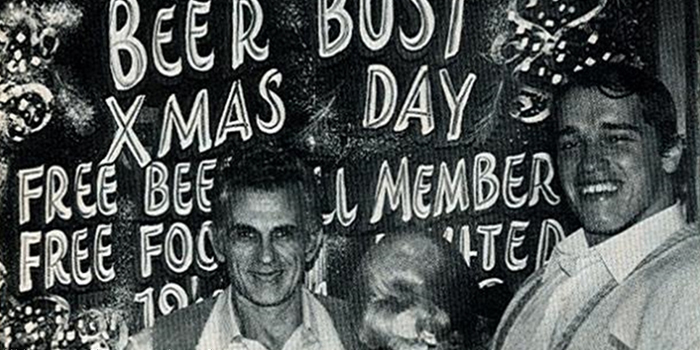
Between the ongoing pandemic, the omnipresent political divisiveness, and one’s ever-present life stressors, a positive constant and thankfully relentless counter to the negative narrative trying to permeate our lives is our individual love for all things strength, power, and muscle.
Training with weights is something that we can, more than not, control when we are surrounded by the uncontrollables and the negatives of the world. Somehow, when things are really dark, having a great training session has the propensity to lift you right back up, to fill your tank with positivity during that sacred time in-between that first set and when the last weight is placed back into the rack.
I have been around the block with regard to the world of gyms, strength, power, and muscle for several decades now. What I find is often what keeps your train’s engine moving forward down the tracks, even when those tracks are headed up the steepest of inclines, is continuously learning something new about all things iron and steel.
From the 30,000 foot view down to the individual nuance impacting the individual, both the global pandemic and political landscape test one’s mettle without a doubt.
RECENT: 5 Things You Can Still Believe In
So with the backdrop of the pandemic and an omnipresent bipartisan political system that is ever eroding people’s ability to civilly disagree with one another, I, like many of you, choose to control my controllables. In doing so, among other things during these trying times, I dove into a book a little bit each evening after my post-workout meal and just before shutting it down for the night.
For this exercise in literary self-medication and self-education, I chose the four-hundred-plus page book Vince’s Secret Locker. Four-hundred pages, albeit often in an eye-straining size six font, thus making for an even longer book. After pondering my purchase, I figured that if the book was great, I'd learn something new, and that information would become of value to my training. Likewise, if the book was a four-hundred-page dud, I would utilize it as the written alternative to the nightly warm glass of milk or counting sheep before hitting the hay. So, be it a good book or a four-hundred-page sleep aid, it was a win-win scenario for my purposes.
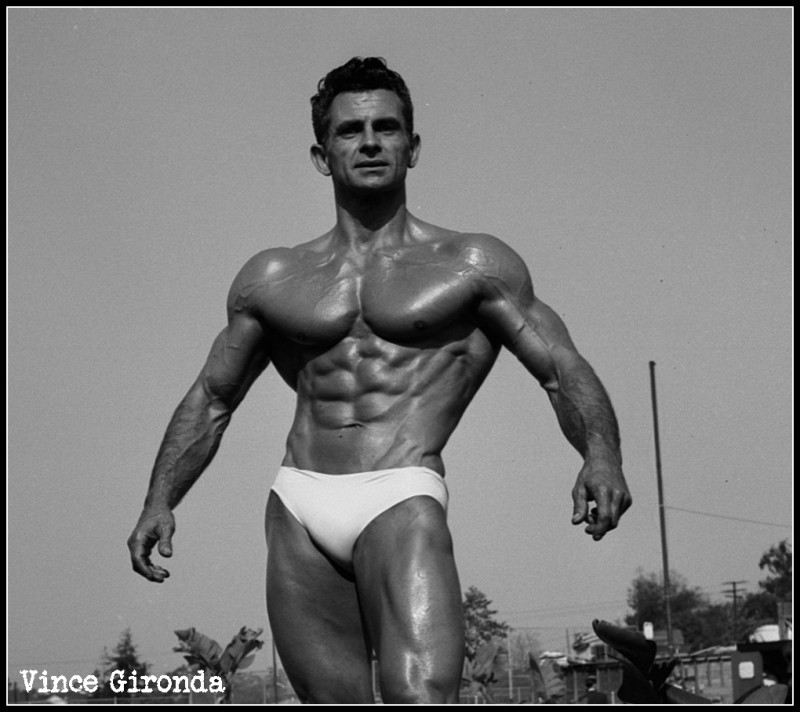
Photo credit: www.gregorytaper.com
As it turns out, Vince’s Secret Locker, by Karl Coyne, was an amazing read on several different levels. Before we delve into the book, for those few who might not know of Vince Gironda, the exceptionally short version of his unbelievable resume reads like this: Vince Gironda was the original Iron Guru, before the word ‘guru’ was tossed around as flippantly and carelessly as the word ‘legend’ is these days (but that is a topic for another time). Vince Gironda opened the famed Vince’s Gym in the late 1940s—a force in the bodybuilding community until it closed in the 1990s. Vince was the teacher of bodybuilders, athletes, celebrities, and all types in-between. He was also the developer of some of the gym equipment used today and is literally the source of hypertrophy methods used by bodybuilders competing today. With regard to those he taught during the zenith of his career, those include bodybuilders like the first Mr. Olympia, Larry Scott; seven-time Mr. Olympia, Arnold Schwarzenegger; three-time Mr. Olympia, Frank Zane; Lou Ferrigno; Rick Wayne; Don Howorth; and Freddy Ortiz.
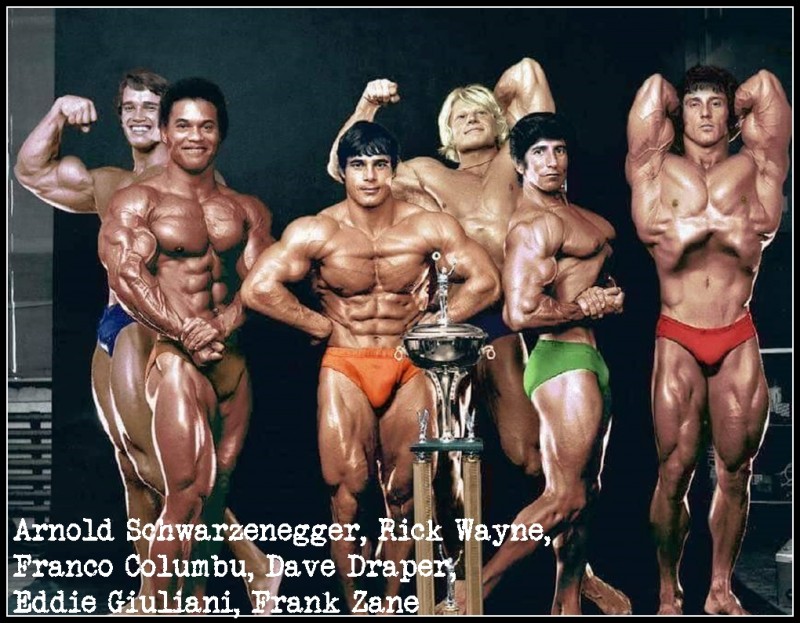
Photo credit: Bodybuilding Colorized Facebook page
That elementary background aside, let’s talk about this amazing book. To begin with, the book provided insight into several specific periods of time, from the 1950s through the start of the 1990s. Each period of time was fully preserved for the reading as if that given era was trapped in amber. In a sense, the era was trapped in this published amber, as the author, Coyne, has compiled virtually every possible piece of information Vince Gironda ever published. The volume of material is profound, to say the least. Secondly, Vince Gironda's perspective from each decade can be juxtaposed with what strength athletes and bodybuilders ascribe to currently. You can read what Gironda taught in the 1950s and how those theories align with or run contrary to today’s practices and research then and now. You can read through each decade and analyze those lifting tactics with the tactics of today.
Another intriguing aspect of the book is the human clay that is sculpted by Gironda and his methods. His gym, the famed Vince's Gym, his methods, his pupils, and the vast population of this bodybuilding subculture back in the 1950s were unadulterated. Unadulterated, as gyms back in that early era of Gironda were vastly, worldly, completely, wholly, and utterly different from the corporate gyms of today. Designed for those few and far between purests during that era. Purests who were searching for power, muscle, size, and health. The gym members of that era were ahead of their time, labeled and shunned as health nuts by most of society. Their pursuit of health and fitness ran counter to the two-martini lunch and the anytime-is-a- cigarette-break-time at the male-dominated workplace during that particular era. Individuals who sought out these gyms, gyms like Vince’s Gym, were individuals conscious about health and fitness and enamored the pursuit of building more muscle.
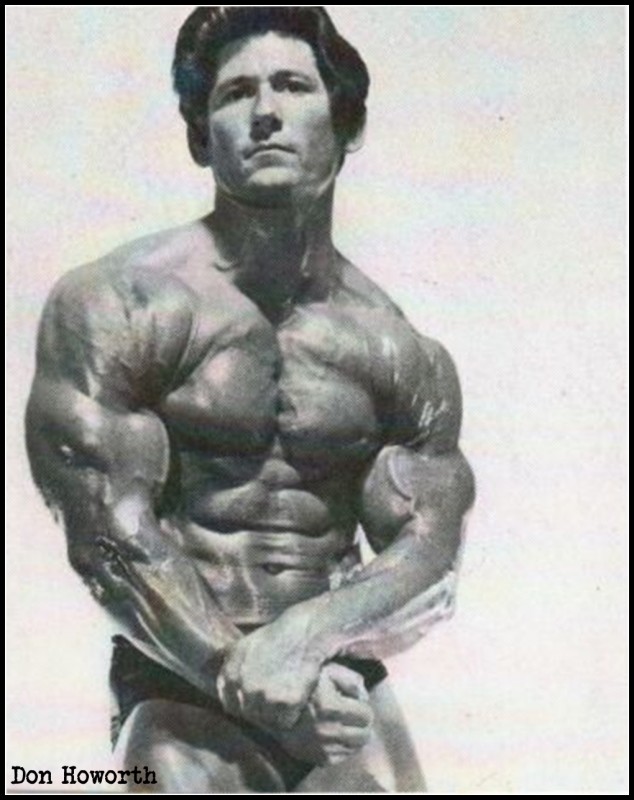
Photo credit: www.ebay.com
Unadulterated, as those pursuing muscularity and strength and size were doing so in an environment virtually void of enhancements. Unadulterated as training that resulted in hypertrophy and strength and power was due to the training methods, nutrition, recuperation, consistency and without the mitigation of pharmaceutical factors as that simply was not the norm back in that era of Sputnik, the development of the hydrogen bomb, and the birth of rock and roll. Said another way, if the average someone was becoming strong(er), more muscular, and more powerful, it was more than likely because the Vince Gironda methodologies were developing, preaching, teaching, and publishing.
In many ways, the world in 1950, some 70 years ago, was much smaller and slower moving. For perspective sake, in 1950, there were three television stations, the transmitter for these three stations shut off at midnight, the US population was 150 million (less than half of what it is today), and of that 150 million, by the end of the 1950s, only one in three homes had a television. With that perspective as the backdrop, the world of bodybuilding, muscle, strength, and health...well, that was hardly even a blip on the cultural radar. With that all said, this perspective serves to illuminate the impact of Vince Gironda’s work concerning hypertrophy during a world where the average American would be hard-pressed to answer even the most basic questions about the world of strength, power, and muscle. For sure none of them in 1950 would know what a preacher curl was and how it helped one develop biceps, as Vince Gironda hadn’t invented the preacher curl yet.
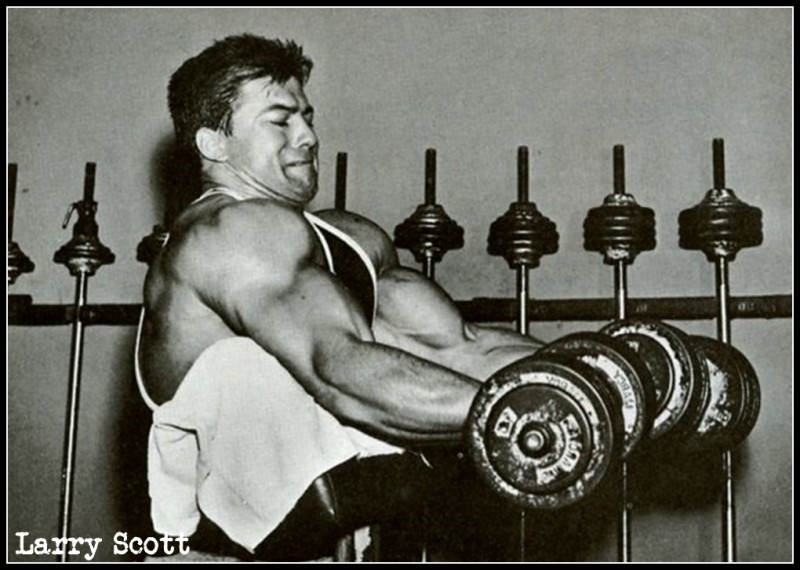
Photo credit: www.linkedin.com
I often speak about the fact that there are no secrets to success in the gym, no magic potion, no super Russian formula, but rather hard work, with that hard work done according to a logistic and pragmatic template and methodology. Understand that it is not the template or methodology that alone produces the desired results, but rather the unseen factor—the lifter's personal makeup applying the temple or methodology. It is the lifter’s internal fortitude and single-minded focus combined with best practices that equate to results. Said another way, fifteen sets of chest is good, but that does not mean two-hundred sets is better, and thus success is more than just following the written word on the page, as the magic is in its smart application of a smart program. With that in mind, this book is a treasure trove of the tried and true as created by Gironda’s work rather than empty promises of muscle growth touted by the snake oil salesmen and saleswomen today that flood the internet with the latest and greatest ‘newly discovered’ this, ‘top secret’ that.
Vince’s Secret Locker is a trip into the past where a measured amount of science and a tremendous amount of trial and error and hard work helped establish a foundation that today’s so-called “guru’s” borrow and steal from. But more than that, this book provides the reader the ability to look back in time at a completely different world in a completely different era and see what worked for bodybuilders back then. An era where for the most part pharmaceutical use would not cloud which training methods moderately worked and which methods worked extremely well. When looking through vintage muscle mags of the 50s and 60s, it is clear that the top lifters were dipping into anabolic elixirs. Still, for the hundreds and hundreds of Gironda’s everyday lifters responding with muscular growth in this smallest of small worlds, those results are directly linked to the information Vince Gironda teaching and publishing.
Coyne’s book provides the ability to see what worked on bodybuilders and why, without the static and distraction and the noise that is social media “coaches” trying to make a quick buck by putting out their programs without having to face those customers and look in their eyes when their result claims fall dramatically short of the promised hype. For Vince Gironda, if his programs and guidance and teaching fell short, that person would stop training at Vince’s Gym or stop paying for his training. In other words, it behooved Vince to create more muscular, more powerful, and stronger clients or that financial well would dry up. But of more importance to him was the fact that his information was also a reflection of his knowledge and calling. As Vince was the producer of many great physiques from the 1950s until the 1990s, it is clear that when the rubber hit the road, Vince’s methods had to be real. Real then vs the social media hyperbole that has made murky the waters for those lifters looking for actual, tried and true methods, not just the newest, trendies and shiniest objects.
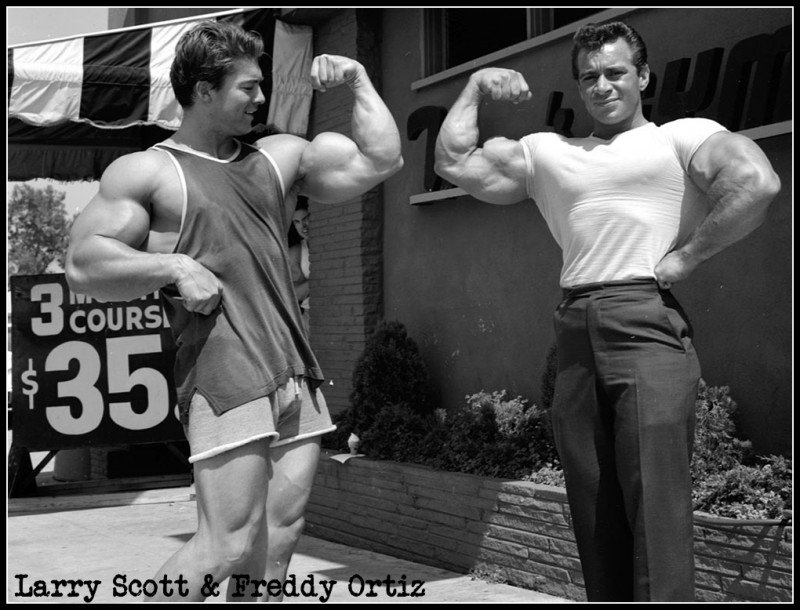
Photo credit: www.xrep.com
Larry Scott, the first IFBB Mr. Olympia (1965 and 1966), was one of Vince Gironda’s clients and for bodybuilding connoisseurs, a figure whose gravitas has been etched into the history book that is bodybuilding. By today’s standards, if you were to compare Larry Scott to one of today’s Mr. Olympia competitors, it would appear to be a comparison of two entirely different species. That said, if Larry Scott’s physique belonged to any member of a local gym, they would be looked at with admiration as human DNA has not changed in 300,000 years and physiques like Larry Scott’s are still few and far between.
Larry stood five-foot-seven and weighed no more than 200 pounds, with his tiny waist and wide back often overshadowed by his famed twenty-inch biceps. Twenty-inch biceps, a staple measurement still sought after by bodybuilders to this day. Biceps created in part with the assistance of what is known to this very day, as the preacher bench, used for preacher curls or also referred to as Scott curls. The bench was imagined, designed, and fabricated by Vince Gironda himself in the 1960s. The point being, Vince Gironda didn’t merely work with bodybuilders; he helped develop the equipment to help them develop the physique they were aspiring to achieve.
Vince’s Secret Locker is a wonderful glimpse into the history of bodybuilding, and you can feel as you read, how as the decades continue to progress, advancement does not always follow the same pace as the passage of time. As you read, you understand that although time and technology are moving forward, the body does not evolve as quickly, as the limiting factor is always the human factor, the human condition, humankind's constant search for the newest and shiniest vs. the gritty, rusted, dinged and scratched tried and true. What stops lifters from progressing today is what stopped them from progressing then, and that is often not applying the required focus, intensity and consistency into the program or method.
Often we mistake newer methods as superior to those of the past, but it is not the newness of the method but the variable of enhancement that is creating more musculature than the work output would be providing absent that enhancement. Vince was vehemently opposed to the use of anabolics as he was steeped in the belief that building one’s health, muscularity, and feelings of well-being all intersected and worked symbiotically together. Anabolics had no place in what he felt the world of bodybuilding was during his time. His era was one where there was no real money to be made, no sponsorship, and no socialookatmedia audience to impress the bodybuilding lifestyle. It was muscle and health for the sake of muscle and health.
Vince saw first hand through hundreds and hundreds of clients the ability to achieve big muscles and robust health. He developed methods allowing for the natural ability to attain sleeve filling eighteen-inch biceps but understood the allure that those methods combined with enhancements would serve to create the arm measurements we see today.
Vince’s materials were published in many forms, and today, you can find some of them scattered about for anyone who aspires to develop greater hypertrophy and muscular development through their application. But being out there, strewn about in the difficult to find vintage magazines and in some places on the internet, pales in comparison to having this massive quantity of his works put together so meticulously in this one book.
In my personal opinion, having read the book in its entirety, it is more than this massive collection of information. One can literally utilize the book’s stated and restated lessons on a continuous basis making it less of a four-hundred-page library and more of a usable star chart to guide your ship during those times when the path leading to your hypertrophy goals seems less obvious.
At minimum, this four-hundred-plus-page book is a deep look into the past, the infancy of bodybuilding as told through the publishings of a man well ahead of his time. At most, this four-hundred-plus-page book is a guide for those natural athletes looking to sink their teeth into what works without the enormous variable of enhancements that can give the illusion of something working extremely well when in reality, its benefit is minor. Its effectiveness is blown completely out of proportion by the enhancement variable.
MORE: Vince Gironda—The World's First Personal Trainer
In either case, if you have an affinity, a fondness, a proclivity for aspects of lifting history, Vince’s Secret Locker is a book for your consideration.
Having said all that, not everyone has the time to sit and read four-hundred pages, so I have compiled a list of sorts of what I would submit are some of the essential takeaways from Vince Gironda’s publishings. Bullet points that can be pondered if you are considering purchasing this book. In looking at this list, you will see that much of what is used today is based on the groundbreaking work of Vince Gironda decades and decades ago. Keep in mind that the book itself contains the significant meat to these mere bullet point bones I am providing. That all said, here are some of the essentials in short that the book goes into in great volume.
Less is More
Vince Gironda preached, taught, and lived a life of less is more with regard to all things hypertrophy. A major theme in Vince’s Secret Locker is Vince’s emphasis with regard to pace of training. He espoused shorter training sessions, but toward that end, sessions with a significant depth of quality. Quickly paced, as in a short duration of time, but with quality, focus, intensity, and purpose.
Vince felt workouts should be timed. Additionally, he believed and taught that one should increase the amount of work or the amount of weight in that given time duration, rather than just tacking on more work. With non-beneficial increased rest time, sessions can be hours long. Beyond that, Vince believed in, and his results verified by hundreds of lifters over decades, trying to shorten the workout as you have sufficiently adapted to that workload in that given time with short rest intervals in-between plays a significant role in stimulating muscle growth.
In the same vein with regard to less is more, as Vince worked with primarily non-enhanced bodybuilders, his decades of successfully building muscle in his lifters led him to the conclusion that twelve sets per body part is a tested guideline for a total set number. Vince often refers to Clancy Ross and Bill Pearl, who both believed that if you can’t get your body part workout in fifteen sets, you are simply not concentrating properly. Stated another way, they felt those lifters performing twenty to twenty-five sets per muscle group simply aren’t training fast, hard, and intense enough, or they would be spent after the twelfth to fifteenth set. Training fast, not meaning the pace of the set, but the pace of the session between sets, specifically an extremely limited time between sets.
Part of the reason for this belief was that Vince worked to get the muscle full of blood, and after too many sets, the lifter lost the pump. This is something that bodybuilders of the classic era, Frank Zane and Franco Columbu, would refer to frequently. “Don’t go past the pump” is a warning they wanted those seeking hypertrophy to heed.
Vince went further to caution about a big pump workout no more than once per week. The other days were about the work where a pump is involved, but not merely focusing on that massive load of arterial blood into the muscles, trapping and slowing the exit of venous blood. He further emphasized the fine line between enough work and too much work. Wanting it so badly that one spends all day in the gym works counter to the less is more. The shorter duration with a concentration on the short time interval between sets and form allows for the muscle, not the momentum, to move the weight.
Vince wrote in detail about how too many sets and too many repetitions, too many exercises, and too many hours in the gym take the lifter past the pump and the confines of their blood sugar levels and thus loss of the pump. Once the body goes past the pump, you pass the threshold to where you are overtraining, subsequently sending the body into a catabolic state resulting in hormone loss and capillary shrinkage.
Vince provides lessons from the 1950s that are still being ignored today. He cautioned and advised that “to achieve a maximum pump, exercise until you notice your pump diminishing. At this point, check back on the number of exercises, sets, and repetitions and the time and tempo required to achieve this effect. This is your personal exercise requirement level.” He continued...” To achieve maximum results, train hard but sensibly. Never exceed your body’s capacity to function and its optimum level. Once you have reached your maximum pump, change to another body section before you pump yourself back down by overworking. You will progress much faster when you apply my tried and proven method of calculating your optimum pump.” This reads pretty differently than the go to failure, go heavy or go home, or forced reps all the time talk of the “gym bros” today. But that said, Vince’s message was what works for the natural athlete, not the athlete utilizing other means of performance enhancement. Enhancement changes limit ranges. Vince simply had no tolerance for that enhancement.
Much of this less is more covered in the book seems at first blush counterintuitive, but in the pursuit of hypertrophy, and when reading his rationale completely, less is more actually advances the muscular growth over a drill-and-kill approach. Or said another way by eight-time Mr. Olympia, Lee Haney, “stimulate, don’t annihilate." Ultimately Gironda is not promoting less work, but concentration, pure concentration with the absence of today's dilly-dally phone scroll time, is actually a tremendous amount of effort, and the challenge of that type of muscular work is difficult to sustain. So less, referring to the duration of time between sets, the number of sets beyond twelve to fifteen per body part.
Karly Coyne’s book contains example after example of Vince’s published beliefs and anecdotal stories from interviews of lifters from that era. One of the so-called “secrets” to muscle growth was concentration. Gironda considered bodybuilding and the larger physique culture like an artform. It had to be meticulously done with precision, focus, intensity, consistency, and expeditiously with regard to time between sets.
As commonsensical as it sounds, Vince Gironda preached not to use more weight than you can handle without losing good form. If you use a weight you can’t handle properly, you call on all the conjunctive muscles around the muscle you are trying to work and therefore cut down on the work you are trying to give the muscle you are trying to develop.
Complete Focus
Vince Gironda was an original and a purest. One aspect of his purest approach was one of complete and total focus. To that end, he was a proponent of connecting with the body in the gym, not just during the training session but literally every rep of each set. Typically, when you go into a gym today, each lifter has some form of headphone/earbud on their head. In less corporate family-owned gyms, the stereo blasts out some type of music to help set a tone. This was not the case in Vince’s Gym. On the contrary, there was no music in his gym, none. In fact, Vince was not a fan of talking during the session either, as time in the gym was short and intense.
Vince wanted people to focus. He espoused that his gym, Vince’s Gym, was not a place to talk but a place to attain results. Vince’s Secret Locker is full of anecdotes where at the end of the account, Vince kicks someone out of his gym as they are either talking too much, or simply not focusing. Although not a great business strategy, Vince’s focus was more so on trying to create an atmosphere where extreme focus could be achieved, and that meant the only soundtrack playing was that of the natural ambient sounds of plates clanging interspersed between the moans and groans and grunts of Vince’s lifters putting their all into their training session. None of the distractions, all of the focus.
I came across an interview with Frank Zane, and during the interview, he spoke at length about when he passed on being in the movie Pumping Iron. Frank Zane was one of the primary training partners with Arnold during that time, as most are aware Arnold trained with many lifters. Zane preferred a quiet atmosphere to train in as he was cut from the same deep focused cloth as Gironda. When he saw the cameras, crews, and distractions of filming at the original Gold’s Gym, Zane passed, and as he tells it, the focus of the movie honed in on Arnold training with Franco, when in reality, they all trained like a family together. The point being, as a three-time Mr. Olympia, Frank Zane also espoused complete focus as he was cut from the same focused cloth as Gironda.
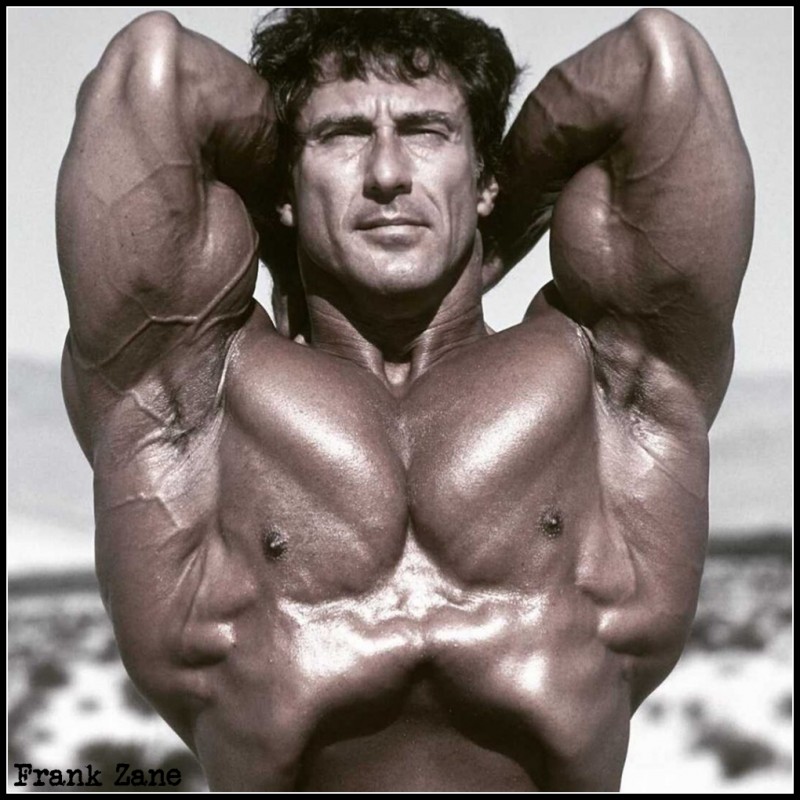
Photo credit: www.strengthcoast.com
After reading his book, I wonder if Vince were alive today and still had Vince’s Gym, how long would it have taken for him to chuck someone’s cell phone across the room when being used during a training session.
Trust but Verify
Through his experiences training and the results of training his clients and watching their improvements in muscularity, Vince found that what he learned in readings from 1925 from a German scientist translated to the weight room. This scientist, whose research 30 years prior to Gironda’s personal findings, discovered that to acquire larger muscles, you must increase the intensity of the work done within a given time. It doesn’t matter how much work you do. What counts is how fast you compile the work. Again, not the pace of the reps, but shortening the duration of time in-between sets when not moving weights. This is what is commonly referred to as the overload principle. Vince would read studies but would verify how the study related to his real-life training experiences with those seeking a life of muscle vs. taking part in a study or research.
Overload principle, a principle today that, although intrinsically known, is all too often shot in the head by the lifter's frequency and duration who disengages. Today we see this with the set done, the barbell is put down, the cell phone is then picked up, and the mind is now disengaged. The phone that we now know through studies kills the fight or flight responses. That phone has thoroughly penetrated the sanctum of the gym and has permeated what used to be a continuous flow of exercise during a session. That flow has been reduced to merely small disconnected chunks of work separated by long periods of head down, thumbs scrolling up. Gironda’s lifters didn’t have the phone, but distractions still presented themselves if the focus was not on point.
Vince compared real-life to the science studies. This trust but verify was a theme with Gironda. He was highly educated about all things muscle, but adding to that was his decades of actual application of his findings over the years and decades and when applied to hundreds and hundreds of his lifters, watching them build quality muscle.
What he learned then, we know now, and that is that the discontinuity of interrupted workouts, regardless of adding to the duration of the time in the gym, virtually ensures that that training session will at best, maintain a lifter's current muscularity and at worst will ensure no additional muscle.
Genetics
Vince knew that the number of muscle fibers stays constant, but the volume of those fibers grows with proper training, nutrition, and recuperation. He knew that those who have more fibers genetically are at an advantage. He also knew from decades of working with his clients that if the person with fewer fibers works the muscle with proper form, where the muscle (not momentum) does the work, keeping the duration of time between sets short, and with extraordinary focus, the volume of those fewer muscle fibers will surpass the muscle size of the more naturally genetic gifted lifter who negates these essential principles of Gironda.
The book provides examples of Vince bringing the best out of the genetically average, especially to those who might not be rich in genetics but possess a wealth of heart, grit, work ethic, desire, and determination. It also chronicles his work with those who coupled hard work with genetics, those like the first Mr. Olympia, Larry Scott.
Tell It Like It Is
Coyne’s book on Gironda chronicles examples of lifters he worked with who truly rose above the rest through his teachings. Lifters like Bill Pettis sported twenty-three-inch biceps during a time when seventeen-inch biceps were considered exceptional. Pettis eventually migrated over to Gold’s gym in the 1970s but was at Vince’s Gym around the time Ah-nold arrived at Vince’s so Vince could work with Arnold on his yet unpolished and blocky European looking physique.
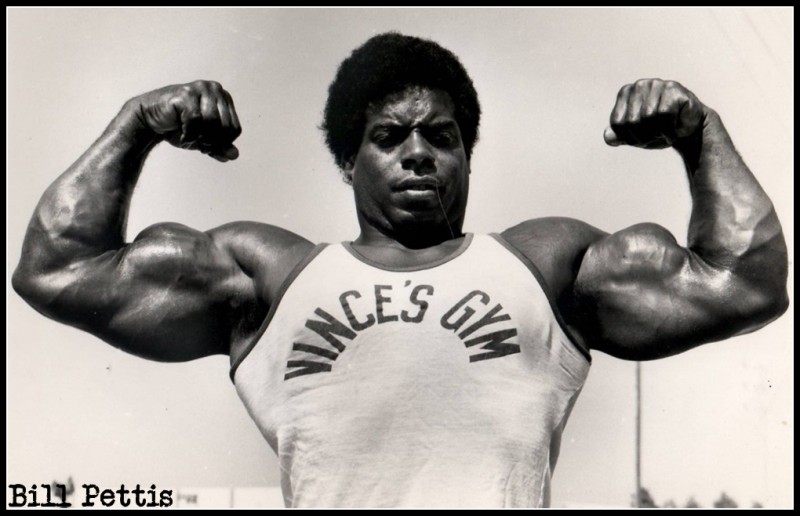
Photo credit: www.muscle-fitness.sk
The book covers the story of that famed meeting of Gironda and the Austrian Oak in mere passing fashion, as the book is more so a massive collection of the writings of Gironda.
If you are looking for a book detailing almost the day-to-day events of the bodybuilding scene back during that era, the book West Coast Bodybuilding Scene: The Golden Era by Dick Tyler is a book I recommend highly.
At the time, Arnold, who was touted as this beast from Europe, arrived at Vince’s Gym weighing 255 pounds. Arnold had clearly not transitioned into the American bodybuilding scene where quality and cuts won shows vs. sheer mass. The story simply goes like this as Arnold entered Vince’s Gym: "I am Arnold Schwarzenegger, Mr. Universe." Vince removed his cigar out of his mouth and replied, "You just look like a fat f*ck to me!” That, tell it like it is, attitude is found in account after account in the book. The book paints a very clear picture that those seeking muscularity attained such if they followed the guidance of Gironda. Those seeking a warm, friendly interaction with Gironda would be greatly disappointed.
A Supplement is Just That
Just as they are today, supplements are a product of a team of advertisers trying to get the customer to purchase their product. Vince believed in keeping whole food the focus over supplementation, but he did believe in some supplementation.
Vince was an avid believer in desiccated liver as it is liver that has been concentrated by a process of vacuum drying at a low temp. For the most part this spares the nutrients. The book goes into quite a bit of detail about desiccated liver. Vince was also was a believer in the benefits of vitamin C, kelp, wheat germ oil, granulars, calcium, and digestive enzymes. Vince’s Secret Locker delves into Gironda’s published list of supplements, and his reasons why taking these supplements are important.
In 1975, Vince supported that three meals were essential, but if at all possible, he proposed six small meals per day. Does that sound like what the “gurus” say today? The book details a number of his pre-contest, off-season, and overall health nutrition plans, as well as his thoughts on steak, eggs, raw eggs, heavy cream, proteins, fats, and carbs.
The Mind is the Body
As a purest, Vince Gironda believed in never merely going through the motions as there were plenty of lifters who showed up every day and went through the motions, for but really putting all your concentration into the movement and bathing that in positive visualization.
He understood the body was tied together by the body's systems working symbiotically together vs. merely looking at the muscular system. He viewed this as short-sighted. He looked at the muscular, skeletal, digestive, endocrine, circulatory, integumentary, immune, nervous, renal systems, etc., collectively. When one system was out of whack, the whole body was then off balance.
He looked at how good food was critical to keeping the body’s system in balance so that the muscles being broken down in the gym could properly heal themselves from the gym. With all systems functioning properly, the body could then focus on healing the muscle damage inflicted in the gym. The book chronicles the bigger picture of symbiosis over a training mindset of an isolation of the muscular system. By his lifters being wholly healthy, their ability to achieve muscular advancement was never fettered by the body having to prioritize a deficit response function over the function of muscular repair and growth.
Tying this all together was Vince’s view of the mind being the key to this whole process. With the body firing on all cylinders, Vince could then have his lifters put their mind into the workout, utilizing absolute focus and concentration as well as visualization.
The Scale of Things
Vince also had a copious understanding that one should never confuse body weight with muscle growth. Those on the hypertrophy journey should understand muscle. Meat, fish, poultry, eggs, and cheese, for example, were staples to muscularity as it is muscle size, not body weight from the extra water molecules’ weight that comes from an excess of carbohydrates. He conveyed to his lifters aspiring to compete in the then even more sub-cultured world of competitive bodybuilding, that the mirror tells the real story as the scale is far too blunt of an instrument to serve as a good feedback tool.
Getting up in the morning to check one’s weight was useless vs. checking the mirror and examining the body’s muscularity, definition, separation, and vascularity. The mirror he felt was the correct assessment tool. He believed that the scale should be limited to those in power sports looking to land in a given weight class.
Devil's in the Detail
Details matter when teaching, as Vince was really more of a teacher than a coach. He would discuss the best angle for bicep growth and how the preacher bench should be up against the lower pec area not the upper pec (where most lifters place the padding). All that we typically read today about hand placement on the curl bar stems from Vince Gironda’s published writings decades ago now passed off.
He would talk about the brachialis anticus (the muscle under the biceps) and its role in the full development of the biceps. Larry Scott is an example of his lessons brought to fruition. Vince would get microscopic in his teachings, and for those who were all in, that was the difference between a person with a training certificate hanging in a frame on the wall and someone who not only trained others but had a competitive career and decades of successful clients as a living resume.
The Dinner Table
Vince warned against eating until full, as he felt for the body's overall balance, eating until a feeling of well being vs. loosen the belt after the meal. He was the first to talk about not mixing proteins and the liver’s role in so much of the body's functions and how an unhealthy liver meant that the body would spend its energy on working on the liver rather than trying to make the muscles larger.
He was a big steak and eggs proponent. When eggs were considered “bad” before they were reconsidered “good,” Vince maintained all along their value vs. the real “bad” of stress and cortisol and processed foods as the actual health villains as they related to inflammation.
Additionally, Vince also cautioned about too much protein at one given time. When working with natural athletes, he felt thirty to thirty-five grams of protein was the max per sitting that the body could utilize and the additional protein converted into sugar. To that end, Vince saw supplement companies constantly pushing the grams of protein as a marketing war between them with regard to who had the “most” protein. Vince recognized the advertisement ploy and kept his lifters to the thirty to thirty-five grams with multiple meals built into the day for the purpose of the grand total of protein throughout the day. He was skeptical from day one till his last day of those in the industry solely to make money vs. make healthy and strong bodybuilders.
Cliche
Although magazines and internet ads put in bold print cliches like, “no pain, no gain,” Vince has his lifters look at things differently. He saw the lifting world being about consistency, the pump, the day-after-day work coupled with solid nutrition and recuperation that makes the difference. With regard to “no pain, no gain”, “go heavy or go home,” and the many cliches intended to motivate, Vince Gironda instead stated the following, “Don’t hit yourself on the head with a hammer because it feels so good when you stop.” He really stressed the very fine line between a full workout and overtraining. That more is not always better and that most who spend three hours in the gym do so because they are not putting the actual focus into the movements and their rest intervals between sets are extensive and counterproductive. That in actuality, the few that do put in that focus can only train an hour and complete much more actual work than their three-hour counterpart. Further, those putting in full focus for the hour with mere fifteen- to twenty-second rest intervals produce far superior muscular growth to those spending more time in the gym but with less actual muscular stimulation.
Be Meticulous and Pay Attention to Nuance
When calve training, Vince felt that no shoes was the way to get the full range of motion.
A simple statement but steeped in decades of experience, Gironda touted big concepts but they were based on meticulous details and he was keenly aware of nuance.
Gironda was a believer in squats for power and powerlifters but not for hypertrophy and bodybuilders. Through his experience, he found that squats worked against the lifter's aesthetics. He felt you got a better feel of the legs and could focus on contraction with a hack type squat and a sissy type squat without the thickening of the waste or pressure on the lower back. Vince believed in the hack slide, a forefather to the hack squat. He was not a fan of the leg press for the same reason he avoided the squat.
For the chest, Vince Gironda avoided the bench press. As a power building requisite for powerlifters, the bench press was great, but for hypertrophy, Vince found great development from flys, dips, and hands-facing-in dumbbell presses. With his eye for nuance and body mechanics, it was elbows pointing outward vs. close to the sides with regard to dips. He also believed and found great results with decline flys with pulleys. Bodybuilders like Rick Wayne are a testament to Vince’s pec routine as even by today’s standards in the classic physique division, Rick would put many to shame with his shape and size.
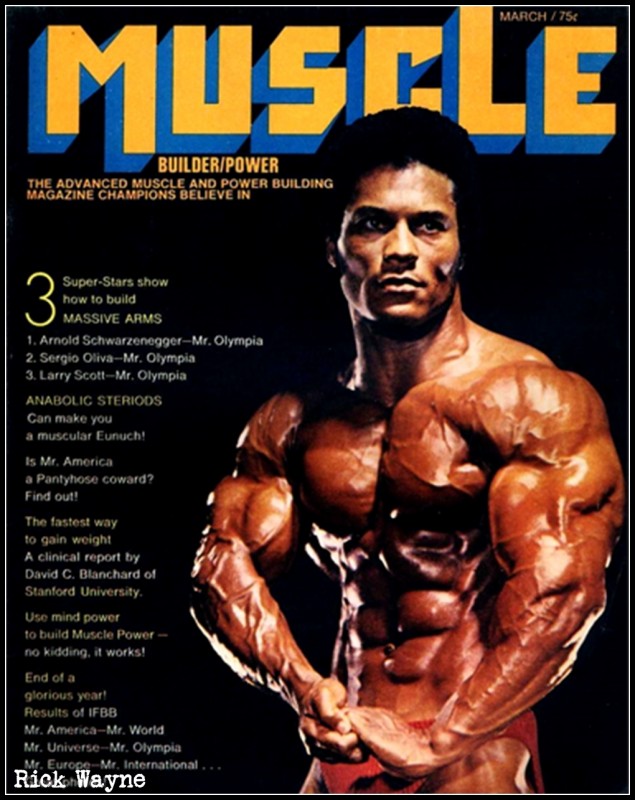
Photo credit: Old-School Bodybuilding Magazine Facebook page
Vince looked at hypertrophy beyond the muscle building. Within the pursuit of muscularity, he also felt bodybuilding was a lifestyle and the pursuit of well-being both mentally and emotionally. That in a circular fashion, that balanced mental state would come back to help the bodybuilder produce larger muscles as lifting when feeling complete and whole, produces far superior training sessions.
Vince believed in eating every three hours and keeping carbs low— not a surprise for today, but for the 1950s and 60s, it was a revolutionary statement. To chunk down his detailed view, he would simplify with key statements: "don’t overtrain...workout like a sprinter, not a long-distance runner…bodybuilding is 85 percent nutrition, use muscle confusion.” These are all of the things you hear today, but nobody heard before Vince Gironda’s time.
Certified by Who?
When asked about personal trainers, and again, this is many decades ago, Gironda’s purposely sarcastic but completely valid answer was one we should ask today, “Certified by who?” Meaning, a piece of paper does not equate to the experience of living a hypertrophy lifestyle and the trial and error that comes with working with hundreds of lifters over a lifetime.
Over decades of experience, Gironda felt trainers typically overwork clients to feel they are getting their money's worth rather than training them for growth and development and the long haul.
Quick Hits
- Vince was a believer and user of the drag curl. Chances are it's not something in most arm routines, but once added, it's a keeper. Try it!
- Vince mandated rest intervals were to be 15-20 seconds in between sets. He felt that the overload principle, the most work in the shortest amount of time with the proper technique, was the North Star for those seeking muscle growth.
- His view on nutrition was similar as he felt most did not fully understand the role of protein.
- Vince never took anything at face value concerning nutrition without looking past that basic and into the reasons why. He would often speak about the role of macrominerals and trace minerals.
- He often cited the 1935 Senate bill number 264, where American’s were informed that US soil was deficient in 22 minerals back then (estimates of 45 today) and that because of this, Vince believed that the body, especially the body under the stress of hypertrophy type training must take in 1000mg of chelated or ionized calcium daily. He believed in the aforementioned macrominerals and trace minerals. He recommended Celtic sea salt (which has come into vogue again as of late) as well as liquid minerals. He informed his clients that these serve to stimulate your hormone-creating muscle tissue.
- Vince believed that one got the most out of the body’s hormones through sound nutrition, recovery, hydration, and sleep. As deeply as he believed in these natural methods, he was equally abhorrent of any form of synthetic hormone.
- He felt that bodybuilding was akin to meditation, to the perfect state of strength and muscles, health and well-being, and that the use of anabolics was the complete antithesis of this. Those lifting for self-fulfillment and setting and achieving goals for their own personal growth and health were true bodybuilders. Those taking anabolics were the polar opposite of this, and his tolerance for this was at absolute zero. He worked with his natural athletes, and this is one of the reasons why his teachings are of benefit for natural lifters today as he believed what works for the enhanced person is not a valid template for those on the path of health, a strong sense of wellbeing and all things holistic.
- He prophesied that anabolics would destroy bodybuilding and ruin the symmetry and classic lines of the natural physique and negate the purpose of the gym, which he felt was creating a healthy body and overall feeling of wellness.
- Vince found over his decades that when bodybuilders hit plateaus, they always add exercises and sets and reps, and this never works. Instead, the real secret is to actually cut back on volume and use better form, more concentration, and greater intensity of effort. He frequently states to use slower movements and do every set as if it were the last set you could do.
- Vince promoted keeping the routine the same, that changing too often is really an indication that one must control their mind. Some of his lifters, like Freddy Ortiz, have used the same routine for decades. Freddy had a physique in the 1960s that if he walked into any gym today, he would be one of if not the best built natural physiques in that facility. In his 70s, Freddy was still holding a great deal of muscle on his physique, with the only difference being that the weights he uses are lighter, but the routine is the same. Program hoppers would do well to heed these words of Gironda: Be patient but also be locked into your mind and routine. Be intense and purposeful with every rep and set as if it were the last.
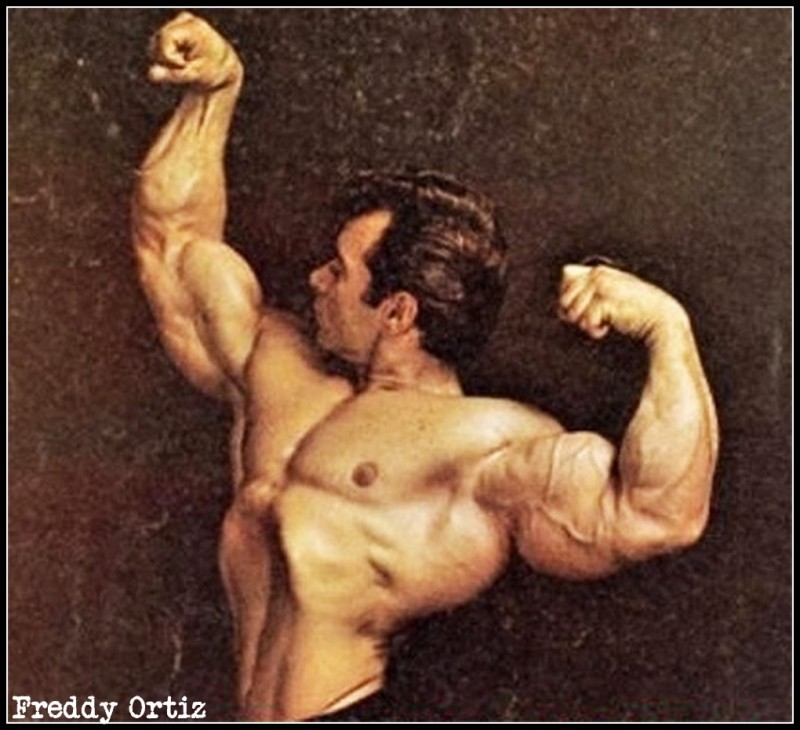
Photo credit: www.greatestphysiques.com
In closing, the era of Vince Gironda is clearly long gone. An era where those with decades of experience worked to help others down the path toward self-improvement has been in large part replaced by the instafamous who stand on the shoulders of giants and tout the information that came before them as new and exclusive to them.
They sell routine X or program Y to the new and unsuspecting lifting novice, often making them feel grateful for a code providing them with 10 percent off a routine or program actually created by those who have long gone and who did the research and hard work in the first place.
There is nothing wrong with making money with one’s knowledge and experience as Vince’s Gym did in its day. Vince's Gym was a building owned by Gironda himself, and it was in that building that he made his livelihood. There is something altogether different when the person selling a service has a personal relationship with the buyer of that service. To that end, the customer comes back to help the seller when the results are achieved as promised.
Vince’s Secret Locker highlights the complexities of Gironda, the knowledgable man with the antithesis of a warm-fuzzy personality. The delivery method and affect aside, the lessons Gironda taught many generations of lifters are relevant today.
As I stated prior, at minimum, this four-hundred-plus page book is a deep look into the past—the infancy of bodybuilding as told through the publishings of a man well ahead of his time. At most, this book guides those natural athletes looking to sink their teeth into what works without the enormous variable of enhancement, as the enhancement variable can give the illusion of something working extremely well when in reality its benefit is minimal at best.
In either case, if you have an affinity, a fondness, a proclivity for aspects of lifting history, Vince’s Secret Locker is a book for your consideration.
Wishing you the best in your training. Ever Onward.
Header image credit: www.behindtheworkout.com










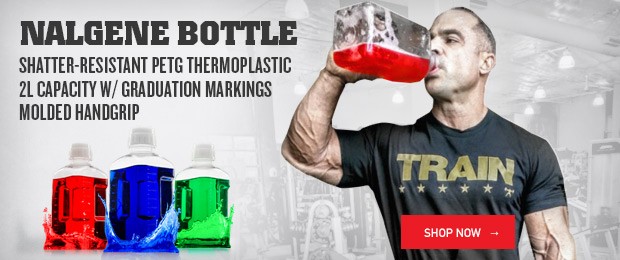
3 Comments